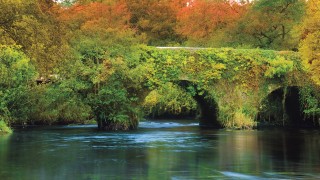
Ballineen & Enniskeane
The twin villages of Ballineen and Enniskean are set on the banks of the river Bandon, between the towns of Bandon and Dunmanway.
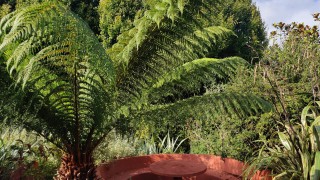
Directions
Located on the R586, 43km west of Cork city, 15km from Bandon.
Special Areas of Conservation
Bandon River Valley
The villages are full of local events, beautiful scenery and historical sites. The twin villages used to be completely independent but in 1952 they were brought together by the introduction of the flax mill, which brought great employment to the villages.
VILLAGES NEARBY: Coppeen village is located on the R585 route, locally referred to as the Bantry line, 15km from Dunmanway and 10km north of Enniskeane.
History
Ballineen: The word ‘Ballineen’ (Irish: Béal Átha Fhinín) means ‘The mouth of Fighin’s Ford’. It is named after Fighin Owen McCarthy who was responsible for the building of the Ballineen Bridge in the mid-1700s. Out of the 29 bridges that cross the River Bandon, Ballineen Bridge is said to be the most picturesque. It has 10 arches and a 19 foot carriageway.
Ballineen belonged first to the Earls of Cork and later to the Earls of Bandon. Lord Bandon improved the village in the mid-19th century by introducing a revival that consisted of building a market house, a courthouse, a Weslyan Chapel, a Gothic Church and two schools in the area. Ballineen held monthly fairs on the streets until the mid 1960s.
Enniskean: The word ‘Enniskean’ (Irish: Inis Céin) means ‘the island of Cian’. It takes its name after Cian Maol Muadh (later O’Mahony), a local Chieftan. Cian married Brian Boru, High King of Ireland’s daughter. They resided at Castlelands, Enniskean.
Kinneigh Round Tower
The unique Kinneigh Tower is located approx. 5km northwest of the villages of Enniskean and Ballineen on a side road just to the south of R 588. It stands on a rock outcropping overlooking St. Bartholomew’s Church of Ireland parish church and cemetery.
St Bartholomew’s Church is on the site of an ancient medieval monastery with a history on the site that stretches back to early Celtic times. Now its Round Tower is the only visible remains. Built in 1014 by St. Mocholmóg who was the Abbot at that time, the tower is unique in that it is the only hexagonally based tower in Ireland and is one of only two round towers in County Cork.
The present church building was completed in 1856.
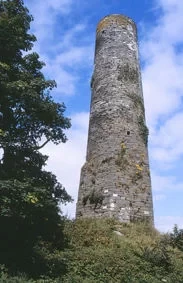
Kilcascan Castle
Kilcascan Castle in Ballineen was built in approximately 1760 by the Daunt family. The castle is located in one hundred and sixty acres of rolling parklands and deciduous forest.
Kilcascan Castle is a castillated house with gothic embellishments. The original design was never completed which was a common occurrence in Ireland due to the political and financial problems of landlords. Many such houses have fallen into ruin or disappeared but Kilcascan has survived largely in its original state. However, the building is in disrepair.In 1988 the castle was sold to its current occupiers who are endeavouring to restore it to its original splendour.
The Castle is essentially symmetrical except for two towers on the south-east and an additional wing on the west. The main entrance is on the north side and the existing principal rooms were intended to face west. The original plan probably included a south wing, thereby creating a central courtyard, and also providing living rooms facing south.
History has been made in Ireland by two occupants of Kilcascan Castle.Joseph Daunt has the dubious distinction of being in 1826, the last person to be killed in a duel in Ireland by none other than his cousin and neighbour from Manch House across the River Bandon.William O’Neill Daunt (1807-1894, Joseph’s son) enjoyed a distinguished and lengthy career as an Irish Nationalist politician and was at one time Secretary to Daniel O’Connell. He was very prominent in the movement to dis-establish the Church of Ireland. He achieved this ambition in 1871.
His second ambition was to repeal the Union with England and to re-establish an independent Irish parliament, whilst retaining the British Monarch as Head of State, but this was not achieved in his lifetime. Unlike many landlords, he spent his fortune supporting the peasants during the Great Famine of 1845-47. The public road leading south from the castle was one of his projects to provide employment and is still known as “New Line”, i.e. a new line of road.
There are many signs that the interior of this building was refurbished about 100 years ago, perhaps following the death of William Daunt in 1894. Many landlords modernised their houses at this time using money obtained from the sale of their lands under a government land reform scheme. However, without the income from their lands, most landlords were unable to maintain their houses and subsequent generations frequently left Ireland. This is exactly what happened to the Daunts at Kilcascan and the castle declined throughout the twentieth century.
While many similar houses in West Cork were burnt by the IRA around 1920, Kilcascan Castle was spared. This was probably because of the Daunts’ nationalist and Catholic connections, and also because the daughter of the house was reputedly godmother to the local IRA commander, who happened to be a neighbour.
Cahirvagliair Ringfort
The fort of Cahirvagliair is a unique site, located near Copeen village, north of Ballineen. It is a bivallate ringfort and was one of the chief residences of the Cineál Laoighaire. It has been suggested that the name comes from the Fort of the Son of Laoighaire “Cathair Mhac Laoighaire”.
The fort has also been connected through local folklore to one of Ireland’s best known historical figures, Brian Boru. It is believed that Brian was held hostage here when he was a young boy between the ages of 8 and 16 years. It has been suggested that because of its size and the stonework in the entrance, that Cahirvagliair must have been built by someone of great importance and may even have been a royal residence.
Cahirvagliair Fort was taken into state care in 1915, but despite this, the fort is in very poor condition. The fosses and ditches which were restored in 1983 and 84 are now in parts, almost non-existent after being flattened.
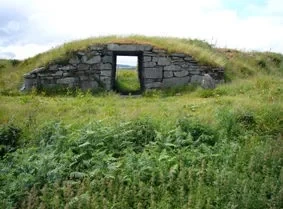
Things to do
Kilcascan Castle
Kilcascan Castle, three miles west of Ballineen, is open to the public for the majority of the year. Admission is free but entirely at visitors’ own risk. Please remember Kilcascan is in a generally poor state of repair and parts of it are dangerous. Children under 14 and animals are not allowed. Opening times are October-March Mondays 9.30am–1.30pm, 26th June-25th July Everyday 9.30am-1.30pm, 1st-10th September Everyday 9.30am-1.30pm. Genuinely interested parties can arrange to visit at other times by phoning 023 47200.
A pick your own fruit farm is located within the grounds of the castle which is open during the summer months selling gooseberries, blackcurrants and raspberries.
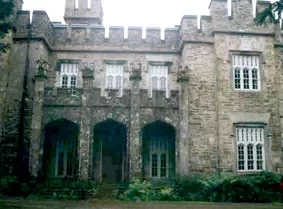
Walking
‘Coppeen Waymarked Walks’ is a series of walking routes around the Coppeen area, which is only a few kilometres north of Ballineen. See the Coppeen Waymarked Walks section under the Walking section.
The Manch Project
The Irish Natural Forestry Foundation (INFF) has established the Manch Project at Manch Estate near Ballineen. The project is designed to demonstrate sustainable establishment and management of broadleaved woodland and involves extending the original semi-native woodland, woodland restoration, field trial plots, riparian trial plots and hedgerow planting and management amongst other features.
The Education Centre runs a series of nature and wildlife courses for both children and adults and regular open days allow the public to explore up to 15 km of woodland paths. Manch lies just north of the main Bandon to Dunmanway road (R586), about 2 miles west of Ballineen and 5 miles east of Dunmanway.
